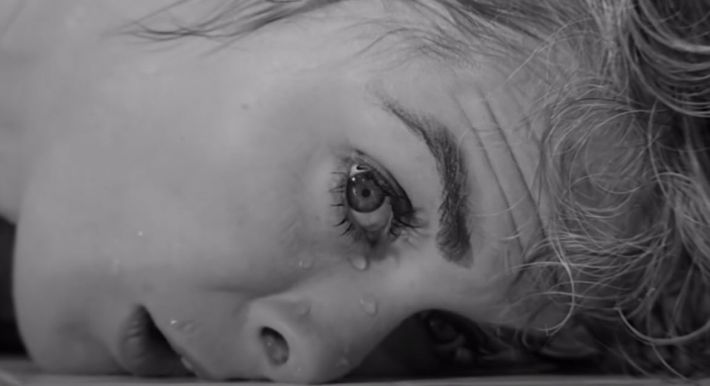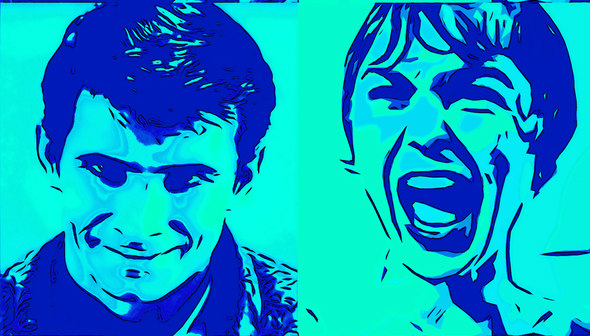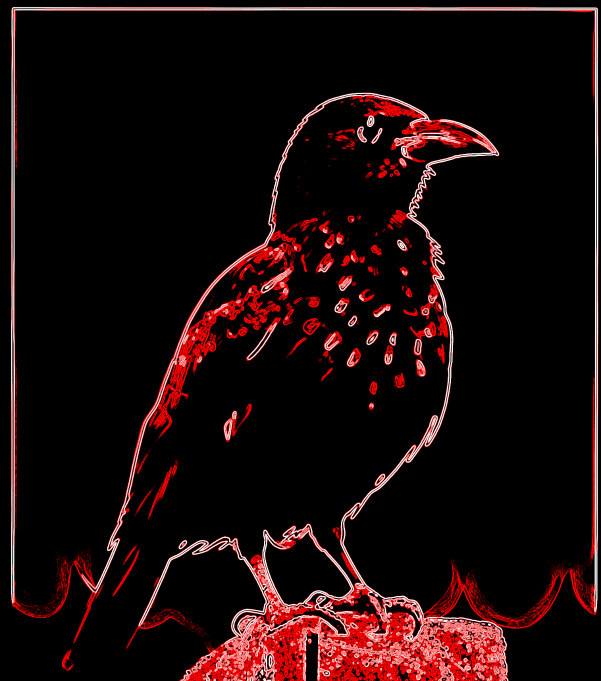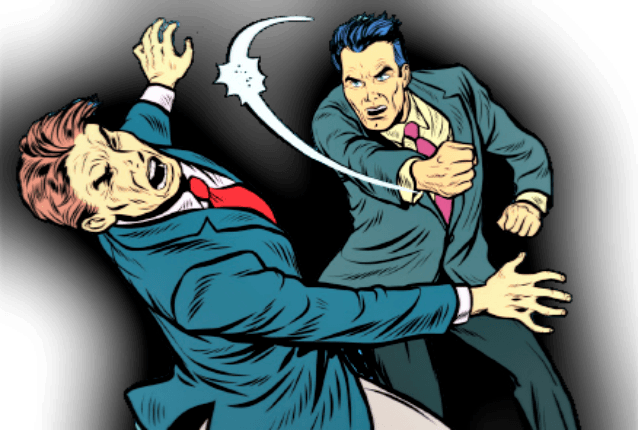- in Mental Health , Personality by Tony
Mental Health in Literature 6: Personality Disorder

More...

We begin by exploring Alfred Hitchcock’s “Psycho”, the psychological thriller, by providing various perspectives and interpretations that can better enhance your exploration of the film’s resilience and understanding of mental illness.
Robert Bloch’s Psycho, published in 1959 by Simon and Schuster, uses a real-life case of Ed Gein, the so-called “butcher of Plainfield”, a gruesome slaying in a small town in Wisconsin, as inspiration to write this novel. Robert was genuinely able to tap into the minds of readers with Psycho.
Paramount Studio refused to finance the making of this film; Hitchcock made the movie with his own money in 1960, even mortgaging his house to do so. Then film critics like Bosley Crowther damned it with faint praise, writing that “Hitchcock is an old hand at frightening people.
Pauline Kael, in 1978, complained about it as a borderline case of immorality, because of the director’s cheerful complicity with the killer, having had a sadistic glee during the shower scene.
Even though it was a flop with the critics, Hitchcock made a fortune from it, leaving him joyfully screaming to the bank.
However, he had an excellent rave review from Andrew Sarris, who called Hitchcock “the most daring avant-garde filmmaker in America today.”

Psycho, directed by Alfred Hitchcock, continues to captivate audiences with its masterful storytelling and chilling portrayal of human nature and mental illness.
Psycho lands on the list of the greatest horror films ever made. The film centres around Marion Crane, a young woman who steals $40,000 worth of real-estate deposit money from her employer and drives from Phoenix to Fairvale California to start a new life with her lover Sam Loomis only to find herself at the eerie Bates Motel by mistake.
Hitchcock uses the time for her to marinate in her feelings of guilt and shame and her total inability to mask it around strangers. As the plot unfolds, Marion’s encounter with the timid Norman Bates, the motel’s owner, reveals a disturbing glimpse into his fractured psyche.
One of the most powerful aspects of “Psycho” is its exploration of dissociative identity disorder, commonly known as a multiple personality disorder. Through Norman Bates’ character, Hitchcock delves deep into the complexities of this mental illness, blurring the lines between reality and illusion.
However, Norman Bates can also be seen as exhibiting characteristics of both psychopathy and dissociative identity disorder. Although it is suggested that Norman suffers from dissociative identity disorder, it is the psychopathic tendencies that become evident through his actions, such as his ability to manipulate others and his lack of empathy.
Norman’s dissociative identity disorder, on the other hand, is depicted by his alternate personality, of his dead “Mother,” who takes control and commits the murders. Norman’s complex psychological makeup and the blurred lines between his identities contribute to his drive to murder.
As viewers are drawn into Norman’s twisted world, they witness his transformation from a seemingly harmless motel manager to a disturbed individual controlled by an alternate persona.
Furthermore, “Psycho” examines themes such as guilt and obsession. Marion Crane’s desperate act sets off a chain of events, leading to shocking consequences for all involved.
Hitchcock expertly weaves elements of suspense and tension to create an atmosphere that keeps viewers on the edge of their seats. The film’s iconic shower scene remains one of the most memorable moments in cinematic history, leaving audiences both horrified and enthralled.

In addition to exploring mental illness and thematic depth, “Psycho” showcases Hitchcock’s technical brilliance as a filmmaker. From his innovative use of camera angles to his meticulous attention to detail, every aspect of the film contributes to its atmospheric intensity.
The haunting musical score by Bernard Herrmann further enhances the psychological impact, immersing viewers in a world where danger lurks around every corner.
This was obvious with the private eye Arbogast (P.I), portrayed by Martin Balsam, is presented as the protagonist.
Arbogast was hired to find Marion Crane and the company’s money. However, his investigation leads him to a shocking discovery about Bates and the mysterious events surrounding the motel.
While Arbogast is initially the film’s protagonist, the character arouses suspicion. His role becomes more significant in building suspense and revealing crucial plot twists.
Such techniques continue to be used today, for example, in the award-winning series Game of Thrones (2011-) which thrives on the death of multiple sympathetic protagonists.

When Norman and Marion are having dinner in the hotel office, after the conversation, Marion returns to her room and confronts a crow, which, for some cultures, symbolises death.
Hitchcock uses many other symbolic meanings in his work to tease the audience. The painting hides the hole in the wall that Norman uses to observe Marion when she disrobes to shower.
The painting on the wall was an interpretation of the biblical story of Suzana, which shows two men taking advantage of a woman while she’s bathing. The sense of voyeurism is present in both the portrait and the film.
Edward Hopper was a renowned American artist known for his realist paintings, and one of the most famous examples of artwork that displays patriarchy is the 1925 painting “House by the Railroad”.
The painting depicts an unseen sleeping woman in a barren, eerie house with a train passing, suggesting her entrapment and isolation. This resonated with Hitchcock, who used similar visual elements and themes, particularly in the iconic Bates Motel.
The isolated and foreboding setting, the sense of unease and tension, and the juxtaposition of light and shadows can be traced back to Hopper’s painting.
The decaying Victorian manor looming over the Bates Motel exemplifies this use. An enormous house that Hitchcock repeatedly lingers on, indicating there are mysteries inside, such as Bates’ hidden secrets under his sensitive demeanour.
The sheriff’s reluctance to examine Bates further as a suspect seems to be a small-town mentality where tight-knit communities protect their own.
Moments of déjà vu compares Bob Ewell in the previous book review of To Kill a Mockingbird; when the local community was gathered to defend Ewell, shouldn’t we consider this the Herd mentality, also known as mob or crowd psyche? This psychological phenomenon significantly impacts upon human behaviour.
The film then ends with some clarity, with a fictional psychiatrist Dr Fred Richmond lecturing the assembled survivors on the causes of Norman’s psychopathic behaviour.
“When the mind houses two personalities, there is always a conflict, a battle”
Hitchcock compels the audience to identify with the quiet, shy character, whose devotion to his invalid mother has cost him his individualism. The viewers then see Norman wrapped in the blanket while his mother’s voice speaks
“It’s sad when a mother has to say the words that condemn her own son”
In conclusion, “Psycho” is a timeless masterpiece that continues to captivate audiences with its chilling portrayal of mental illness and masterful storytelling.
Alfred Hitchcock’s exploration of dissociative identity disorder through the character of Norman Bates leaves a lasting impression and forces us to confront the dark recesses of the human mind.
With its themes of guilt, obsession, and technical brilliance, “Psycho” remains an enduring classic that continues to thrill and unsettle audiences.

In Chuck Palahniuk’s novel Fight Club, the exploration of identity loss and alienation aligns with the characteristics of dystopian literature. The book was a slow burn and awkward to read, but he then achieved cult status on DVD, and the film’s popularity drove sales of the novel.
It’s important to note that Fight Club and Psycho have distinct differences in their storytelling techniques, style, and narrative focus. However, they share a joint exploration of dark psychological themes and offer thought-provoking commentary on the human condition. Whereas, Fight Club has plot twists that keep the reader questioning what is real and imagined.
There are suggestions that the violent and anarchistic actions depicted in the book serve as a form of mourning for the perceived loss of the traditional patriarchal entitlements and the sentiments of emasculation experienced by the characters due to societal pressures and compliance.
Readers argue that the narrator and Tyler Durden’s creation of Fight Club and Project Mayhem stem from a desire to rebel against societal expectations of masculinity and reclaim a sense of power and identity.
This has led to online communities focusing on men’s issues and promoting specific ideological perspectives called Manosphere.
Palahniuk relied on stories his friends told him throughout his life, to use as the core of his book with his own childhood trauma.
The protagonist, known only as the Narrator, has no passion for his job, is lonely, and suffers from chronic insomnia, and a general sense of discontent with his life is influential in his mental health state. As the story progresses, it becomes evident that he is also grappling with dissociative identity disorder, as an alter ego named Tyler Durden emerges.

The protagonist is disillusioned with modern consumerism and feels trapped in a monotonous and dehumanising existence. He seeks to escape by creating an underground fight club, and Project Mayhem adopts a philosophy of anarchism, seeking to disrupt and dismantle the existing social order.
Fight Club also questions the constructs of identity and the disillusionment that arises from a life devoid of purpose. The characters in the novel strive to find meaning beyond the superficial trappings of modern society, leading them down a path of nihilistic exploration.
Thereby, the novel explores themes of masculinity, power, and the deconstruction of societal norms, presenting a grim and chaotic vision of society.
Overall, Palahniuk’s portrayal of mental illness in Fight Club is thought-provoking and offers a unique perspective on the complexities of the human mind.
Dissociative Identity Disorder (DID): The novel’s protagonist, referred to as the unnamed Narrator or “Jack,” (Edward Norton) develops a split personality known as Tyler Durden (Brad Pitt).
This can be seen as a depiction of dissociative identity disorder, a mental illness characterised by the presence of two or more distinct identities or personality states.
The narrator in the book presents Tyler Durden as both a hallucination and an alter ego. However, this portrayal in Palahniuk's work has spread misinformation about schizophrenia. While the narrator's condition is depicted as a typical case of schizophrenia, it does not align with any authentic psychological disorder (Palahniuk page183.
Through Tyler Durden, the novel explores the protagonist’s struggle with his own identity and the manifestations of his repressed desires.
The characters in the novel seek empowerment by rejecting societal norms, engaging in physical altercations, and exploring their own dark impulses.
Tyler Durden can be seen as a manifestation of the narrator's shadow aspects. The narrator, with his monotonous and unfulfilling life, represses his dissatisfaction and darker impulses. Tyler, as the embodiment of these repressed aspects, represents the narrator's suppressed desires for chaos, aggression, and rebellion against oligarchy.
Jung believed that the integration of our shadow aspects is crucial for achieving psychological wholeness and personal growth. The exploration of the shadow aspects aligns with Jung's perspective on the importance of integrating all aspects of ourselves, including the elements we may tend to reject or deny.
It's worth noting that the concept of the main character and his friend being the same person is not explicitly revealed until this pivotal scene. There were subtle hints and obvious clues throughout the story.
“Why would anyone possibly confuse you with me?”
“… Because we’re the same person.”
With this realization, the narrative shifts, and the previously separate entities of the narrator and Tyler merge into one to embrace the darker aspects of his own psychology. The story then reaches its climax as the narrator reconciles with his own inner demons and faces the consequences of their destructive actions.
This portrayal of mental illness is unique in that it blurs the lines between reality and fiction, as the Narrator’s perception of events and his own identity becomes increasingly blurred with the frequent switching of time and place within an alternating state.
Love Triangle Dynamic: The relationships between Tyler (Brad Pitt), Jack (the alter ego by Edward Norton), and female drifter Marla Singer (Helena Bonham Carter) create a love triangle dynamic, albeit an unconventional one, given the fragmented nature of the Narrator’s identity.
Marla becomes a point of contention and competition between the two sides of the Narrator, exacerbating the internal conflict within him.
Review of the Separation Distress Hypothesis in Fight Club
Summary: In Fight Club, the narrative provides an exploration of the separation distress hypothesis as it relates to depression, albeit in a somewhat unconventional manner.
The separation distress hypothesis is a psychological theory that suggests that the experience of loss, particularly separation from significant others or attachments, can contribute to the development of depressive symptoms.
In the novel, "Fight Club" begins with Jack feeling trapped and nihilistic. While the narrative of Fight Club does not explicitly address the separation distress hypothesis in a clinical sense, it portrays the protagonist's journey through a lens of internal separation and the resulting depressive symptoms.
By exploring the character's struggle with identity, disconnection, and the search for meaning, the novel provides a unique perspective on the psychological aspects of depression and the impact of internal separation on one's well-being.
It's important to note that Fight Club takes a fictional and metaphorical approach to the exploration of depression and internal separation,
the protagonist, referred to as the narrator, experiences a sense of separation distress within himself. He feels disconnected from his own identity and emotions, leading to a growing sense of emptiness and alienation.
This distress becomes exacerbated when he creates an alter ego, Tyler Durden, who represents his repressed desires and acts as a separate entity from the narrator himself.
While the narrative of Fight Club does not explicitly address the separation distress hypothesis in a clinical sense, it portrays the protagonist's journey through a lens of internal separation and the resulting depressive symptoms.
By exploring the character's struggle with identity, disconnection, and the search for meaning, the novel provides a unique perspective on the psychological aspects of depression and the impact of internal separation on one's well-being.
It's important to note that Fight Club takes a fictional and metaphorical approach to the exploration of depression and internal separation.
It is also suggested that sufferers from Dissociative Identity Disorder exhibit a wide range of symptoms, many of which are related to the cohabitation of distinct identities. Such symptoms include unexplainable headaches and pains, unfounded phobias, memory loss, and distortion of time relative to the sufferer.
Furthermore, there exists a strong link between DID and depression, and it is generally agreed upon that there is a causal relationship between the two.
I remember in the early days when patients were being released from Psychiatric Hospitals and living in the community.
One of the most common criticisms about this disorder in the film was the violence used to create a more cinematic experience, leaving a string of false beliefs about this condition.
Unfortunately, the previous two examples of Dissociative Identity Disorder were extremely violent and prone to doing evil things. This is not true and can severely misrepresent the psychiatric disorder.
Individuals with Dissociative Identity Disorder do not tend to be violent; they tend to hide their mental health problems.
Case Study: For confidentiality reasons, Miss Sandra, a 35-year-old female, was homed within the community outside her county to avoid being recognised. Her alternative persona could swear like a trooper, and placing her socially into the local community was problematic when you are in a restaurant and eating with young children in earshot. There wasn't any indication when she would switch over, and the air became blue.
Even after reprimanding her, it would follow her declaring her innocence, even squawking. It wasn't me; it was her. This was somewhat surprising because someone who suffers from actual dissociative identity disorder would never be able to interact with their alternate personae–they would not even know that the other(s) existed.
Furthermore, dissociative identity has none of the core symptoms of schizophrenia, but many confuse visual hallucinations of people with alter egos.
Dissociative Identity Disorder is usually the result of sexual or physical abuse during childhood. Sometimes, it develops in response to a natural disaster or other traumatic events like combat. The disorder is a way to distance or detach from the trauma.
It might be confused with other behavioural or learning problems common in children, such as attention deficit hyperactivity disorder (ADHD). For this reason, Dissociative Identity Disorder usually isn’t diagnosed until adulthood.
It is essential to recognise that people with mental illnesses, including dissociative identity disorder (DID), are individuals and their behaviour cannot be generalised.
Providing proper support and treatment to individuals is crucial to helping them manage their symptoms and lead fulfilling lives. This was the ethos within the company policies and plan for this individual.
Finally, many Hollywood blockbusters focus on a specific condition for a cinematic experience. These films often revolve around a violent sociopath with a split personality who is usually diagnosed with schizophrenia in an inaccurate and stigmatising way.
You could name more; let me start you off.
- In the Star Wars trilogy, Anakin Skywalker undergoes a personality flip to become the evil Darth Vader due to a traumatic event in his life revealed in parts of the series of movies.
- In The Lord of the Rings, Gollum bickers with his alter ego Sméagol, apparently driven to madness and ugliness by dark forces associated with the ring he calls his “precious.”
- Sybil, a 1976 film about a girl with sixteen different identities, gained widespread cinematic praise and the character has arguably become the face of the dissociative identity disorder.
- Dr. Jekyll and Mr. Hyde have much similarity to Dissociative Identity Disorder.
- Jim Carrey Me Myself and Irene, an ill-fated attempt to render DID as comedy.
Here are five morel films that explore the topic of Dissociative Identity Disorder (DID), also known as multiple personality disorder:
"Split" (2016) - Directed by M. Night Shyamalan, "Split" revolves around a man with DID who has multiple distinct personalities, some of which are dangerous. The film delves into the psychological implications of the disorder and its portrayal of the different identities.
"Identity" (2003) - Directed by James Mangold, "Identity" is a psychological thriller that follows a group of strangers who become trapped at a motel during a storm. As they are killed off one by one, the film explores the mystery of their interconnected identities.
"Fight Club" (1999) - While not solely focused on DID, "Fight Club" features a central character who develops dissociative identity-like symptoms. The film portrays the protagonist's struggle with his alter ego and blurring of identities.
"Primal Fear" (1996) - Starring Richard Gere and Edward Norton, "Primal Fear" involves a courtroom drama where a young man is accused of a brutal crime. Throughout the film, his mental state and potential multiple personalities are explored.
"Sybil" (1976) - Based on a true story, "Sybil" tells the tale of a woman with DID and her psychotherapy sessions to uncover the cause of her fragmented identities. The film delves into the traumatic experiences that led to the development of her multiple personalities.
It's important to note that while these films explore DID as a narrative element, they might not always provide an accurate portrayal or representation of the disorder. Filmmakers often take creative liberties and exaggerate certain aspects for dramatic effect.
Conclusion: Fight Club delves into the protagonist’s struggle with his alter ego and the manifestation of his repressed desires.
It explores themes of dissociation, schizophrenia, and self-destruction. In Alfred Hitchcock’s Psycho, the psychopathy of the main character is studied, and the film delves into the effects of childhood trauma on the psyche.